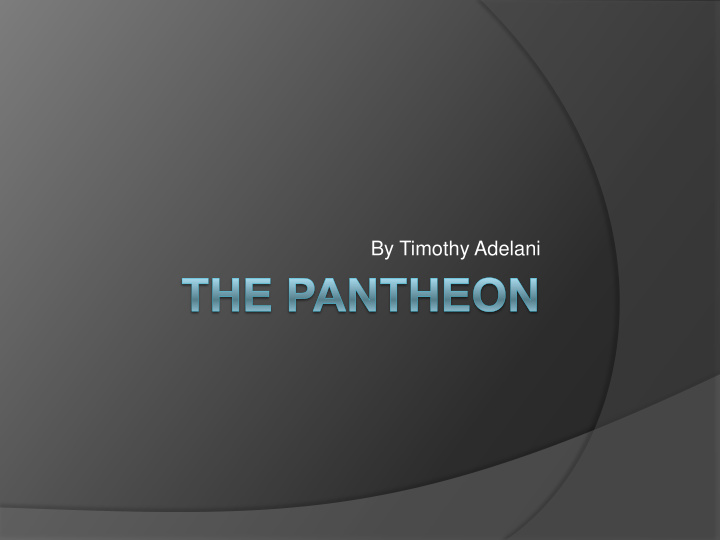



By Timothy Adelani
History Originally built by Marcus Agrippa in 27BC In Campus Martius 732 workers for 3 years M·AGRIPPA·L·F·COS·TERTIUM·FECIT Disputed shape-T shape or Circular with a triangular porch Completely destroyed in 80AD
After the fire it was reconstructed by Domitian This burned in 110AD Rebuilt by Hadrian The bricks are dated by manufacturing stamps Trajan’s architect Apollodorus of Damascus This is the current Pantheon
Materials Granite columns From Egypt, Mons Claudianus Weighed 60 metric tonnes Dragged 100Km to the Nile, floated down the river, transferred across Mediterranean to Ostia, on barges up the Tiber to Rome. Main building Marble Travertine Tufa Pumice Brick
Portico
Previously approached by steps Pediment Relief sculpture-gilded bronze Eagle with outstretched wings in a ribboned wreath
Columns Monolithic Granite Originally 50 Roman feet with 10 foot capitals However they obscured second pediment Therefore only 40 Roman feet and 8 foot capitals Corinthian Capitals There are three niches at the back of the portico Possibly for Julius Caesar, Augustus Caesar and Agrippa
Dome
The whole dome is made from concrete and weighs 4,535 tonnes It’s weight is reduced by a honeycomb structure inside as well as the use of the oculus as opposed to an apex To shed more weight the cupola is 6.4metres at the base and 1.2 at the oculus The inclusion of terracotta jars added air to the cement making it light The dome is supported by eight barrel vaults built into the walls
The dome is composed of different layers of materials Travertine Travertine/Tufa Tufa/brick Brick Pumice Coffers Oculus Reduce weight Natural light Apocalyptic
Geometry 43.3m-perfect sphere Coffers add depth Largest dome in the world until Brunelleschi’s Florence Cathedral in 1436
Interior
The floor is slightly tilted Circles and squares the predominant theme Unifies the building Lavish multicoloured marbles Coffers May have contained stars or rosettes
Later Use Has been in use since it was built Shut as a temple with the onset of Christianity Given to Pope Boniface VIII in 608 Renamed St. Mary and the Martyrs Tombs Vittorio Emanuele II, Umberto I, Rafaello
Thanks for Watching
Recommend
More recommend